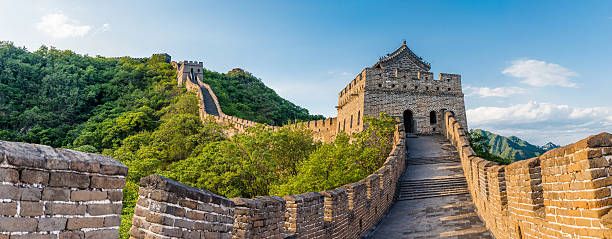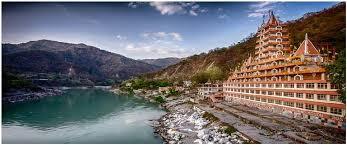The Great Wall of China: A Timeless Tourist Destination
The Great Wall of China is one of the most iconic landmarks in the world, representing centuries of history, culture, and human ingenuity. Stretching over 13,000 miles across northern China, this architectural marvel has stood the test of time, becoming a symbol of the country’s strength and resilience. Over the years, it has evolved into a major tourist destination, drawing millions of visitors from across the globe. This article explores why the Great Wall is a must-visit destination, offering historical insights, travel tips, and the best ways to experience this wonder.
A Brief History of the Great Wall of China
The construction of the Great Wall began as early as the 7th century BC during the Warring States period, when several states built walls to defend their territories. However, it was during the reign of Emperor Qin Shi Huang in the 3rd century BC that the different sections of these walls were connected, forming the foundation of what would become the Great Wall. The wall was further expanded and strengthened during the Ming Dynasty (1368–1644), resulting in the structure we see today.
The primary purpose of the Great Wall was to protect China from northern invaders, particularly the Mongols. The wall served as a physical and psychological barrier, deterring enemy forces and providing early warning systems through watchtowers. It also facilitated communication across vast distances, with signal fires being lit to send messages quickly between various parts of the wall.
While the wall never completely stopped invasions, it succeeded in slowing down enemy movements and protecting the Chinese empire from large-scale attacks. Today, it stands as a testament to the ingenuity and determination of the Chinese people.
Why the Great Wall is a Must-Visit Tourist Destination
The Great Wall of China is more than just an ancient fortification; it is a symbol of human endurance, creativity, and the desire to build something that stands the test of time. There are several reasons why the Great Wall is a must-visit destination for tourists:
1. Historical Significance
Visiting the Great Wall is like stepping back in time. As you walk along its ancient pathways, you can almost imagine the soldiers who once stood guard, protecting their homeland from invaders. The wall tells the story of China’s long and rich history, making it a fascinating destination for history enthusiasts. Each section of the wall, whether built during the Qin, Han, or Ming dynasties, offers insights into different periods of Chinese history.
2. Architectural Marvel
The construction of the Great Wall is an incredible feat of engineering. Built over rugged terrain, the wall winds its way through mountains, valleys, and deserts. The materials used range from stone and brick to tamped earth, depending on the region and availability. The design includes watchtowers, fortresses, and signal stations, making it a complex and well-thought-out defense system. Despite the challenges posed by the landscape, the builders of the Great Wall created a structure that has lasted for millennia.
3. Breathtaking Scenery
The Great Wall offers some of the most breathtaking views in the world. Whether you visit in the spring when the flowers are in bloom, or during winter when the wall is dusted with snow, the scenery is always stunning. From the top of the wall, you can see the vast expanse of the Chinese countryside, with mountains and forests stretching out as far as the eye can see. The combination of natural beauty and man-made architecture creates a truly unique experience.
4. A Cultural Experience
The Great Wall is not just a physical structure; it is also a cultural icon. Throughout the centuries, it has been the subject of countless poems, songs, and stories. Visiting the wall offers a chance to connect with Chinese culture and understand the importance of the wall in the national identity. Many visitors find that their trip to the Great Wall deepens their appreciation for Chinese history and traditions.
5. Adventure and Exploration
For those who enjoy adventure, the Great Wall offers plenty of opportunities for exploration. Many sections of the wall are steep and require physical endurance to climb. There are well-preserved sections that are easily accessible to tourists, such as Badaling and Mutianyu, but there are also more rugged, less restored areas like Jiankou and Simatai for those seeking a challenge. Whether you’re hiking along a restored section or exploring a crumbling part of the wall, the experience is both exciting and rewarding.
Top Sections of the Great Wall to Visit
The Great Wall is vast, and different sections offer varying experiences for tourists. Here are some of the top sections to visit:
1. Badaling
Badaling is the most popular and well-preserved section of the Great Wall. Located about 80 kilometers northwest of Beijing, it is easily accessible and has been restored to accommodate tourists. Badaling offers wide paths, handrails, and other amenities, making it ideal for families and those who prefer a more relaxed experience. The panoramic views from this section are breathtaking, and visitors can walk along the wall for miles while taking in the stunning scenery.
2. Mutianyu
Mutianyu is another well-preserved section of the Great Wall, located about 70 kilometers from Beijing. It is slightly less crowded than Badaling, making it a great option for those looking to avoid large crowds. Mutianyu is known for its watchtowers and the lush forests that surround the wall. Visitors can take a cable car to the top of the wall and enjoy a scenic walk along its ancient pathways.
3. Jinshanling
For those seeking a more rugged and adventurous experience, Jinshanling is an excellent choice. Located about 120 kilometers from Beijing, this section of the wall is partly restored, offering a mix of well-preserved and crumbling sections. The hiking here is more challenging, but the reward is spectacular views and fewer tourists. Jinshanling is particularly popular with photographers due to its dramatic landscape.
4. Jiankou
Jiankou is one of the most challenging sections of the Great Wall to hike. Known for its steep, crumbling paths and wild, unrestored beauty, this section is not for the faint-hearted. However, for those who are up for the challenge, Jiankou offers a truly unique and rewarding experience. The scenery here is dramatic, with jagged cliffs and dense forests, and it provides a sense of adventure that you won’t find in more touristy areas.
5. Simatai
Simatai is another section of the wall that offers a balance between restoration and natural beauty. It is known for its steep inclines and stunning views, especially at sunrise and sunset. Simatai is also unique in that it allows night tours, giving visitors the chance to experience the Great Wall under the stars.
Best Time to Visit the Great Wall

The Great Wall is open to tourists year-round, but the best time to visit depends on your preferences. Spring (April to June) and autumn (September to November) are the most popular times to visit, as the weather is mild and the scenery is at its best. In spring, you’ll see flowers blooming, while autumn offers vibrant fall colors.
Summer can be hot and crowded, especially in the more popular sections like Badaling. Winter, on the other hand, offers a quieter experience with fewer tourists, and the snow-covered wall is a sight to behold. However, be prepared for cold temperatures and potentially slippery conditions.




